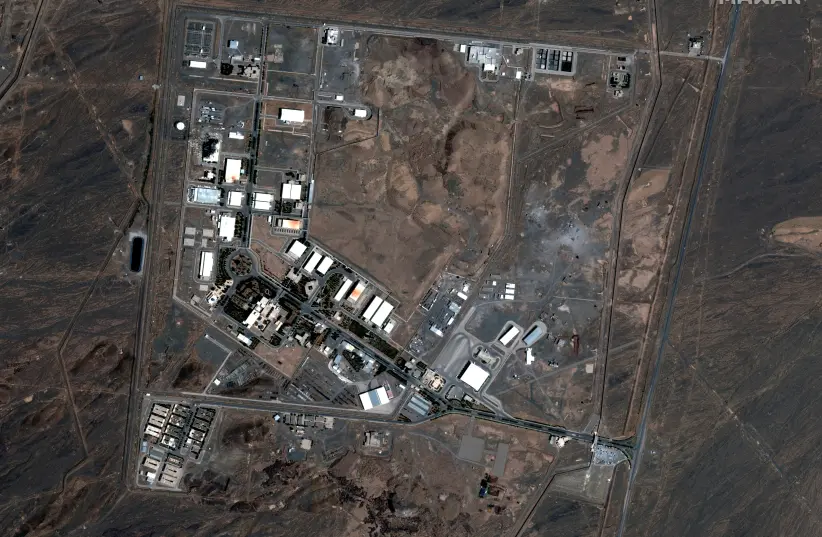Iran’s state television on Saturday identified a man it said was behind the recent explosion and power outage at its main Natanz nuclear plant.
“Reza Karimi, the perpetrator of this sabotage… has been identified” by Iran’s intelligence ministry, state TV said. It said the suspect had fled Iran before last Sunday’s blast, which the Islamic Republic has blamed on arch-foe Israel.
The television showed what it said was a photograph of the suspected perpetrator on a red card that had “Interpol Wanted” written on it. The card listed his age as 43.
“Necessary steps are underway for his arrest and return to the country through legal channels,” the report added.
State TV also aired footage of rows of what it said were centrifuges which had replaced the ones damaged in the blast at the Natanz uranium enrichment plant.
It added that “a large number” of centrifuges whose enrichment activity was disrupted by the explosion had been returned to normal service, the report said.
Earlier this week, Western sources quoted in Israeli media said the attack, which was initially referred to as an “accident” by Iran, was carried out by the Mossad.
Iran admitted on Sunday evening that the so-called “accident” was the result of a “terrorist” act.
The country’s nuclear chief, Ali Akbar Salehi, said the international community and the International Atomic Energy Agency needed to deal with what he called nuclear terrorism. Iran reserves the right to take action against the perpetrators, he was quoted as saying.
The damage was worse than what Iran had initially presented to the public, a source confirmed to The Jerusalem Post. Western sources said the facility was hit by a cyberattack, but the Post has learned that it was a confirmed physical attack.
The alleged Israeli attack on Iran’s Natanz nuclear facility targeted an electrical substation located 40 to 50 meters underground and damaged “thousands of centrifuges,” Iranian officials revealed in recent days.
Fereydoon Abbasi-Davani, former head of Iran’s Atomic Energy Organization, told Iranian media on Monday that the attack hit an electrical substation located deep underground and managed to damage both the power distribution system and the cable leading to the centrifuges in order to cut power to them.
The Post has learned that the attack was carried out through an explosive device that was smuggled into the facility and detonated remotely. An intelligence official told The New York Times on Tuesday that the attack took out both the primary and backup electrical systems.
Davani confirmed on Monday that the attack last July was also carried out with explosives that were smuggled into a centrifuge assembly facility at the site, embedded in a heavy table.
 Eurasia Press & News
Eurasia Press & News



